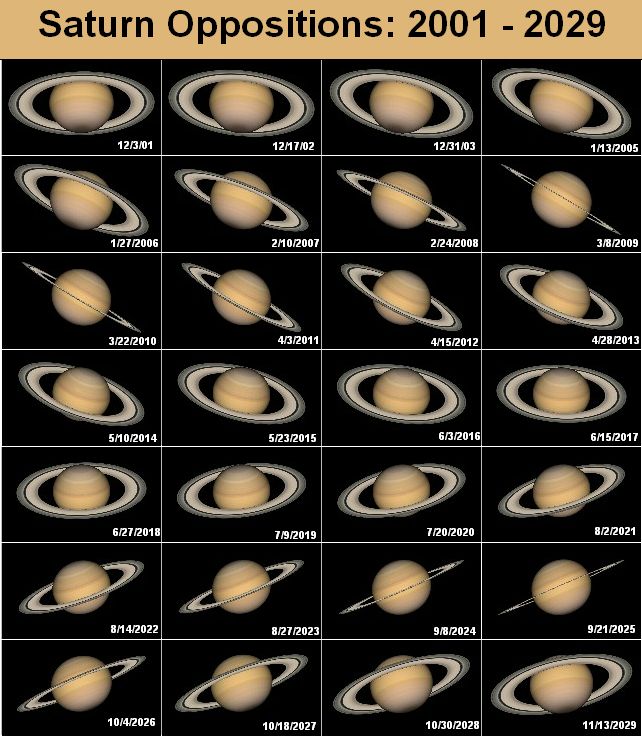It takes Saturn 10,832 Earth days to complete one orbit around the Sun. That means the answer to ”how long is a year on Saturn” is 29.7 Earth years. The length of Saturn’s year is a direct effect of its orbital distance from the Sun. Saturn orbits at an average of 1.43 billion km, or 9.58 AU, from the Sun.
Knowing how long a year is on Saturn might make one wonder if the planet experiences seasons like we do here on Earth. Yes, Saturn experiences seasons. Saturn has an axial tilt of 26.73 degrees, allowing different hemisphere to experience varying levels of sunlight. Of course, the seasons only go from cold to a whole lot colder. Also, the seasons last nearly 30 times longer because of the length of the planet’s year. Can you imagine a seven year summer that never reaches higher than -23 C?
The length of a day on Saturn is 10.656 hours. While that number seems to be pretty precise, it took a lot of study to arrive at that figure. There is no way to observe the planet’s surface region, so a way had to be found to estimate the planets rotational speed. Scientists first turned to radio emissions for an estimate, then observation by space craft. They then found that the rotational period varied by as much as 1% over the span of a week. The current stated length of a day on Saturn is an average from all observations.
Saturn’s movement through its orbit occasionally causes its rings to disappear. The phenomenon is called ”ring plane crossing”. Ring plane crossings occur when the tilt of the planet and its position in its orbit combine to allow a side-on view of the rings. The rings seem to disappear, but, without the glare from the rings, the planet’s moons are more easily observed. Also, these crossings are the best time to see Saturn’s blue north pole.
29.7 Earth years is the answer to ”how long is a year on Saturn”, but it leads to many other questions about our mysterious neighbor. Direct observation is the answer, but there have only been four missions to visit the planet as of today(October, 2011). The Casinni-Huygens mission is currently in orbit sending data on a regular basis. Hopefully, it will expand our knowledge of Saturn beyond expectations.
Here’s an article that discusses how Saturn’s rings can seem to disappear, and here’s how long a day is on Saturn.
Here’s a great photo collage of Saturn’s rings seen at various angles to the Earth, and some general Saturn facts.
We have recorded two episodes of Astronomy Cast just about Saturn. The first is Episode 59: Saturn, and the second is Episode 61: Saturn’s Moons.
Sources:
http://solarsystem.nasa.gov/planets/profile.cfm?Object=Saturn
http://www2.jpl.nasa.gov/saturn/faq.html#what

